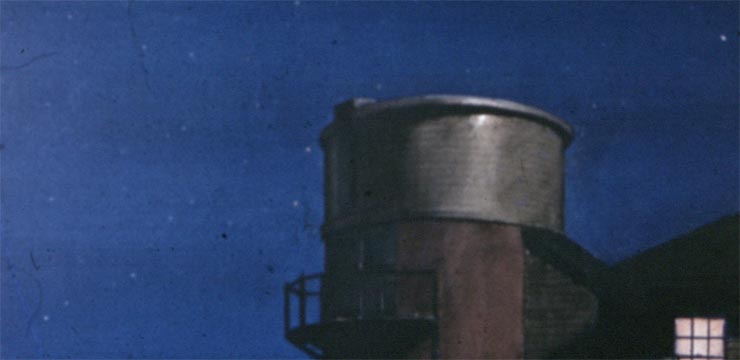
First night of Jupiter viewing
by Matt White
Saturday evening hosted a full moon, crystal clear skies, and a large crowd at Seagrave Observatory.
After opening the observatory, Jim Hendrickson and I trained the scope onto the moon. Tonight, I had remembered to bring along my ND filter and a selection of low power eyepieces for lunar observation. Even with the filter in place I found the brightness of the lunar surface to be at the threshold of pain. With a 40mm eyepiece we observed at magnification factor of 66x.
Once everyone had seen the moon, I trained the Clark over to Epsilon Lyrae, the Double-Double. For this target Jim and I chose an 18mm eyepiece which rendered a magnification factor of 144. By now we had over twenty five people in the dome, as it was the only scope in operation this evening. After everyone had taken a first look, I bumped the magnification up to 213x, making it a tad easier to split the two pairs.
With the illumination of the full moon I decided not to show the Ring Nebula so we trained the scope to Omicron Cygni, a yellow and blue binary pair approximately 1100 light years from Earth.
After everyone had seen Omicron Cygni, we trained over to Albireo, the fifth brightest object in the constellation of Cygnus. Because of the color differential (a bright yellow and dimmer blue) this object is locally known as the “Cub Scout Star.”
Our next target was 61 Cygni, a binary pair at the fifth and sixth magnitudes. It took me a little while to find them but we soon had the elusive pair in view. This system consists of a pair of K-Type dwarf stars approximately 10.3 light years distant. Despite their relative proximity, the pair is not often observed without instruments.
While we waited for Jupiter to clear the trees, we trained back over to the moon, which was now quite high in the sky bathing the dome in a powerful shaft of moonlight which danced off the flyball governor in an almost magical way.
When we trained over to Jupiter, I kept the 40mm eyepiece and ND filter in place which seemed to bring out the cloud banding much better than would otherwise be seen. The seeing tonight was much better than it was the night of the meeting and the King of the Planets would occasionally pop into view with a significant amount of detail. The four Galilean moons were lined up in a row along one side of the planet making for a spectacular view.
By 11:00 pm, the crowd had thinned out and we closed down for the evening.
Submitted by, Matt White



